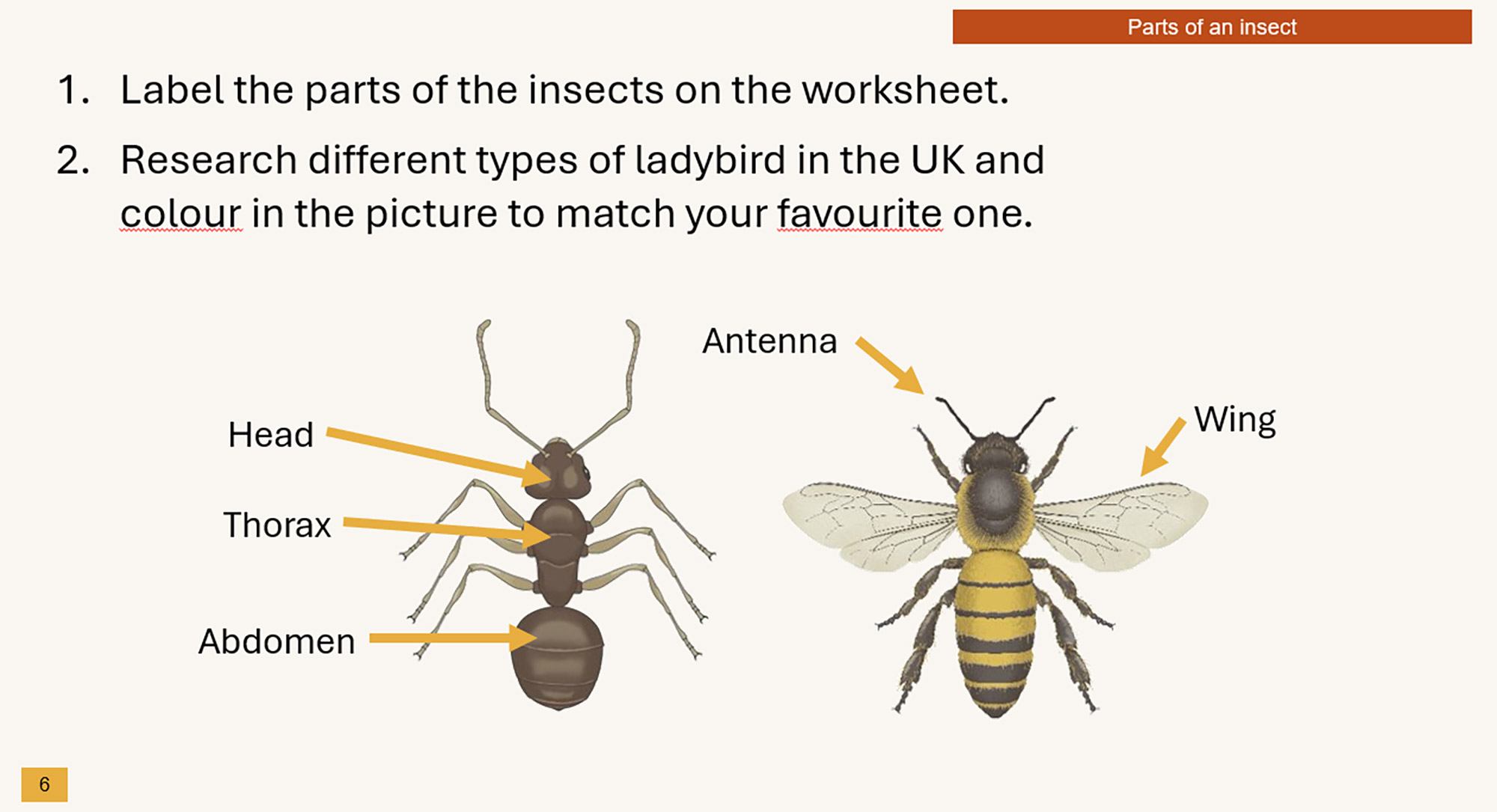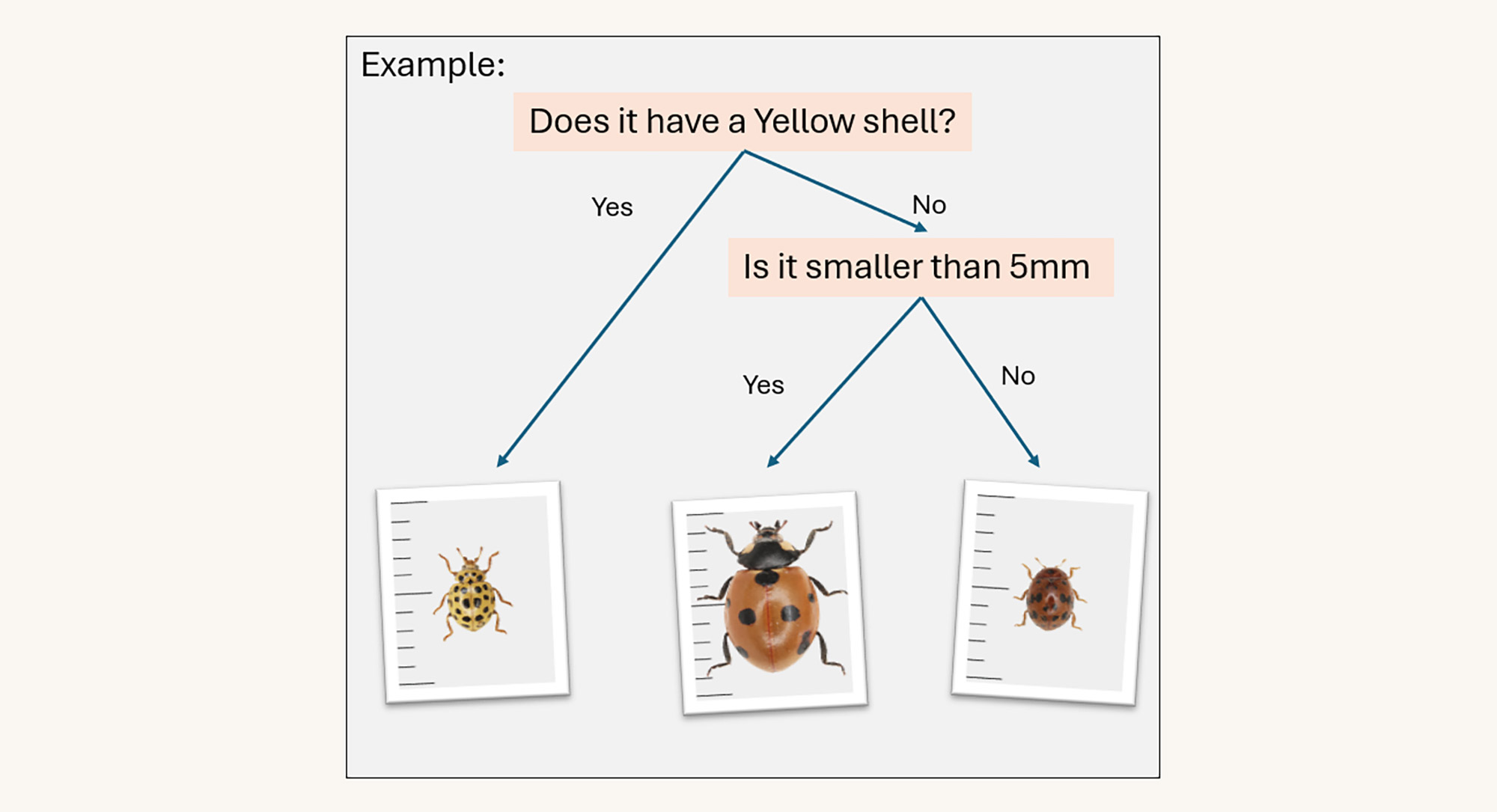All about ladybirds
A PowerPoint presentation introducing ladybirds and looking at the survival adaptations of camouflage versus poison.
Ladybirds, with their distinctive look and vibrant colours, are great for introducing classification in the classroom. They are also common in many habitats, so they work well for classes looking to apply their new skills outdoors.
These activities cover grouping and classification across Key Stage 1 and 2.
At Key Stage 2, some classes might benefit from reviewing parts of an insect before developing a ladybird classification key using the sorting cards. Older classes might conduct a ladybird survey, recording more detailed notes and contributing to UK ladybird monitoring. The case study can be used as an example of recording detailed survey notes and how these notes can lead to useful insights.
Many of the activities make use of the ladybird sorting cards available to download and print below. The cards show photos of specimens from the NHM’s beetle collection: 150 specimens representing ten species. This allows students to see some of the variation between individuals of a species. See Evolution across primary science for why this is important.

A PowerPoint presentation introducing ladybirds and looking at the survival adaptations of camouflage versus poison.

A chart showing 10 of the most common ladybirds in the UK.

These cards feature 150 ladybirds from 10 species - showing the variation within species.

Objectives:
Activity resources to download:

Objectives:
Activity resources to download:

Objectives:
Activity resources to download:
Ladybird survey case study

Activity resources to download: